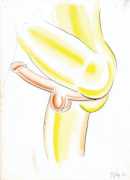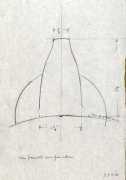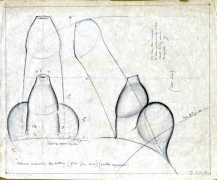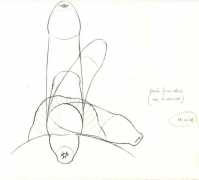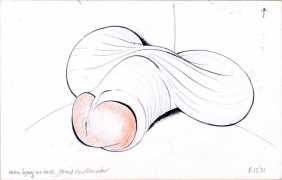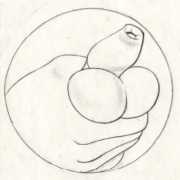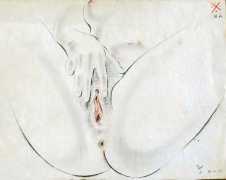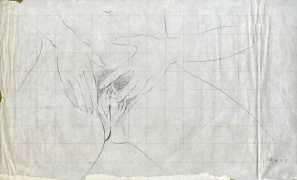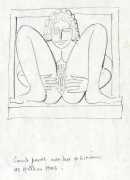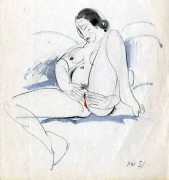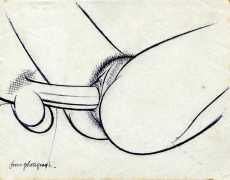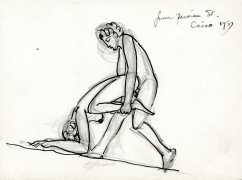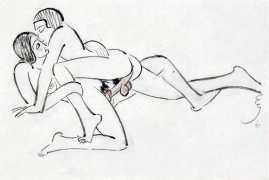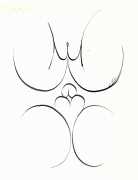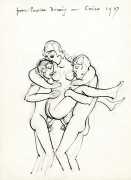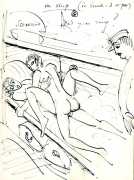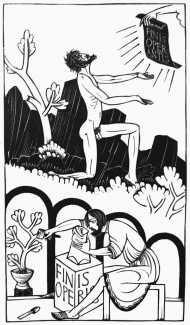
In 1931 Gill published a small book called Clothes: An Essay upon the Nature and Significance of the Natural and Artificial Integuments worn by Men and Women. The last but one chapter (the last was on the fascinating issue of why men don’t wear skirts, and why they sometimes should) was entitled ‘Nature and Nakedness’, and lays out clearly and intelligently his arguments for the appropriate circumstances for wearing clothes and – importantly – for not wearing them. His basic argument is that it is natural and healthy to be fascinated by the naked body and what it is capable of, importantly including the parts too often thought of as sinful and embarrassing, and therefore to be hidden at all times.
He didn’t just think these ideas – he explored them practically. He drew and measured his own genitals, wanting to know exactly how they expanded and contracted. When possible he watched and recorded other people’s, and fantasised and drew what he imagined possible.
These drawings, made mostly in the 1920s, were found among his extensive archive after his death, are are now held in the British Library. They provide an absorbing insight into an artist who was infinitely fascinated by the strange ways in which humans interact with themselves and each other.



